Exploring the DMZ + Border Area Full-Day Tour from Seoul: An Authentic Look into Korea’s Divided Land
If you’re curious about the division between North and South Korea, this DMZ + Border Area Full-Day Tour from Seoul offers a comprehensive glimpse into one of the most sensitive and fascinating regions in the world. Guided by a knowledgeable expert with a background in North Korean studies, this tour promises more than just sightseeing – it’s a chance to understand the history, culture, and current realities of the Korean divide.
What makes this tour stand out? First, the insider knowledge provided by the guide, Ph.D. Ahn, who enriches the experience with insightful context. Second, the variety of stops that cover historical sites, observation points, and local villages, giving you both perspective and authenticity. Third, the value for money at just $40, which includes most entrance fees, a traditional Korean lunch, and a commemorative souvenir. The only caveat? The tour’s duration, stretching up to 11 hours, might be a long day for some travelers, so comfort and stamina are key.
This experience suits those eager to learn in-depth about Korea’s division without the heavy political jargon. It’s ideal for history buffs, curious travelers, or anyone wanting a meaningful day beyond typical city sights. However, be prepared for a full itinerary and a bit of walking, with some stops more intense than others.
Key Points
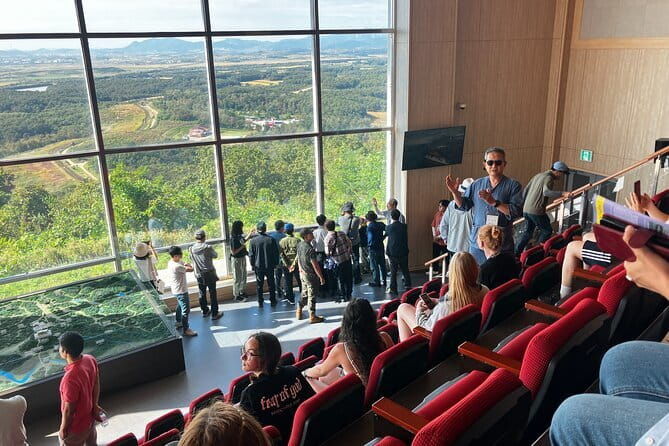
- Expert Guidance: Ph.D. Ahn offers in-depth insights into North Korea and the DMZ’s significance.
- Authentic Experiences: Includes visits to symbolic sites, a local village, and observation points.
- Balanced Itinerary: Mixes historical, cultural, and modern elements for a well-rounded view.
- Affordable Price: At $40, the tour covers most entrance fees, lunch, and souvenirs.
- Flexible Stops: The itinerary varies based on the group size, ensuring tailored experiences.
- Long but Rewarding Day: Approximately 9 to 11 hours, ideal for dedicated travelers.
The Detailed Journey Through the Korean Borderlands
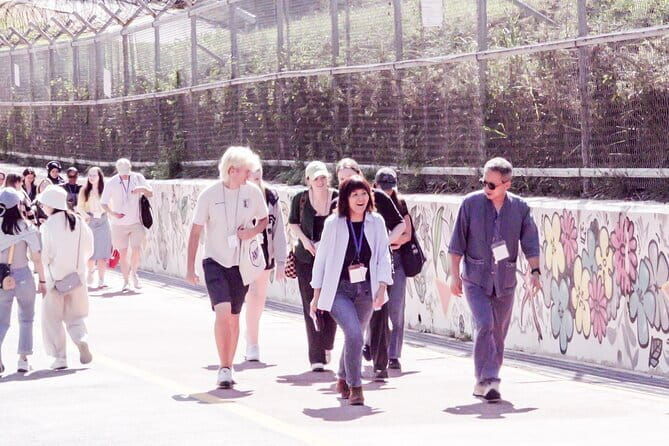
Here are more experiences we've reviewed in Seoul
Starting Point: Hongdae at 8 a.m.
We begin the day gathering at Hongik University Station’s Exit 3, right in the lively Hongdae district. Meeting in front of the Olive Young store, the group quickly forms, and the guide hands out a detailed map and souvenir sunglasses holder, setting a friendly tone for the day. The early start at 8 a.m. means a full day ahead, but it’s worth it for the insights that follow.
First Stop: Imjingak Pavilion and the DMZ
The first physical connection to Korea’s divided past is the Imjingak Pavilion, built in 1972 as a rest stop for displaced people longing for their northern homes. Here, you’ll see the Dokgae Bridge, the steam train used during the Korean War, and the statue of peace at Imjingak, all poignant symbols of separation and hope.
Reviewers like Linda appreciated this part for its educational value, noting the space’s significance: “The group was fun and tour guides were very informative, educational and helpful.” The free admission helps keep costs low, but the emotional weight is what sticks.
Visiting the Iconic Dora Observatory or Other Key Sites
The next phase of the tour depends on your group size:
- More than 30 people? You’ll visit the Dora Observatory, which offers sweeping views of North Korea, the Gaesong Industrial Complex, and the demilitarized zone itself. This is the most recognizable symbol of the divide, giving a clear visual of the neighboring country.
- Between 20-30 people? The itinerary shifts to Dorasan Station, a symbolic train station with a view towards potential reunification, or the inter-Korean immigration office, the only land-based immigration checkpoint in Korea.
- Less than 20 participants? You’ll explore the Seolmari Battle Memorial Park, commemorating Korea’s military history, which highlights the ongoing tension and sacrifices made over the decades.
Tongilchon-gil: A Taste of Local Life
Moving into Tongil Village, access is restricted and requires guidance, adding an element of exclusivity. Here, you’ll taste traditional dishes made with Jangdan soybeans, renowned for their quality due to the pure waters of the Imjin River. You can pick from Doenjang, Cheonggukjang, or Kongbiji Jjigae, each offering a flavor-rich experience that connects you to the land’s history and resilience.
Reviewers like Linda mention the significance of this stop: “The soybeans are grown in the fertile soil of the DMZ border area. Each dish provides a unique opportunity to experience the history of the DMZ and the hard work of Tongil Village residents.”
The DMZ Guide Center: A Close-Up of the Divide
The DMZ Guide Center, built by the tour organizers, is a modern hub just 3 km from North Korea. Its rooftop provides a unique vantage point to observe the border area with a panoramic view — something you won’t get from the standard observation deck. Here, you can take photographs at designated spots and enjoy the peaceful yet tense landscape.
Odusan Unification Tower: Seeing North Korea Up Close
Next, you’ll visit the Odusan Unification Tower, arguably the most striking observation point. With a telescope, you’ll see North Korean villages and the Han River estuary, offering a literal and figurative view into the lives of your northern neighbors. This site also hosts exhibits outlining the history of Korea’s division, giving context to the sights.
According to reviews, this stop provides a deeper understanding of North Korean daily life, enhancing the emotional connection to the experience.
Reflecting at Donghwa Gyeongmo Park
The scars of war are visible at Donghwa Gyeongmo Park, where memorials and monuments remind visitors of the cost of division. It’s a moment to pause, reflect, and perhaps think about the hope for peace. The quiet atmosphere here is appreciated by visitors, who often mention how it encourages a moment of solemnity amid the busy day.
A Symbol of Reconciliation: The Catholic Church of Repentance and Atonement
The tour’s penultimate stop is the Cathedral of Repentance and Atonement. This church symbolizes hope, peace, and the possibility of reconciliation. Visitors can pray or meditate quietly, capturing the sense of healing that the site inspires. Photos are allowed outside, but inside, flash photography is discouraged.
Wrapping Up: Hongik University Street & Munsan Market
The tour concludes back in Hongdae, typically between 5 p.m. and 6:30 p.m., depending on traffic and the group’s pace. The final stop on some days is the Munsan Liberty Market, especially on Wednesdays and Saturdays, offering a lively market experience with authentic Korean shopping and local culture.
Practicalities and Value
At just $40, this tour offers remarkable value considering it covers most entrance fees, includes a traditional Korean lunch, and provides a special souvenir and detailed map created by a North Korean Studies Ph.D. The price is especially attractive when you consider the depth of experience and guided insights you receive.
Transportation is via comfortable bus, and the small to medium group size (up to 43 travelers) ensures a personalized experience. The tour is generally suitable for most travelers, with some walking involved and a 30-minute plus walk to the Third Tunnel, which can be skipped if preferred.
What Reviewers Say
The reviews highlight the guide’s expertise, with one reviewer noting that the guide’s dedication to peace and education added meaning to the experience. A common theme is the value of understanding Korea’s division through authentic sites and expert commentary, making it more than just a sightseeing tour.
Considerations
A key point is the requirement of a valid passport for DMZ entry — a strict policy that shouldn’t be overlooked. The tour’s length and full itinerary mean it’s best suited for travelers with stamina and a genuine interest in history and current affairs.
Final Thoughts
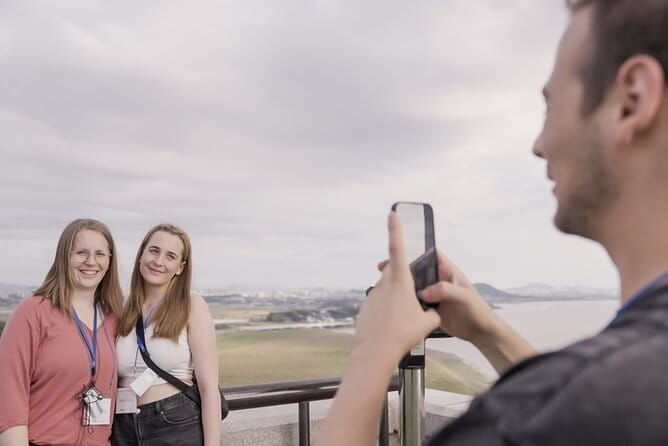
This DMZ + Border Area Full-Day Tour from Seoul is a thoughtfully curated experience that balances historical context, cultural insights, and symbolic sites to provide an authentic understanding of Korea’s division. Its affordability, expert guide, and well-chosen locations make it a compelling option for travelers eager to learn more about one of the world’s most divided nations.
Whether you’re a history enthusiast or simply curious about the Korean Peninsula’s complex reality, this tour offers a meaningful day out. The mix of sites, stories, and scenic views creates a layered, respectful look at a land divided but hopeful for peace.
Who Should Consider This Tour?
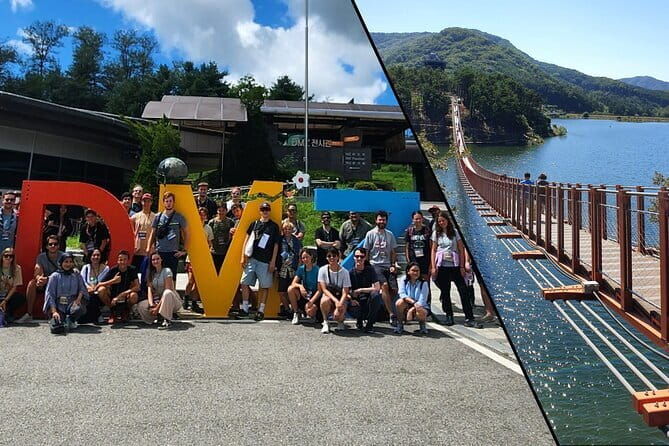
This experience is perfect for those who want more than just photos — it’s tailored for curious minds, history lovers, and travelers seeking authentic, educational experiences. If you’re okay with a long day of sightseeing and walking, and want to understand Korea’s division from a knowledgeable guide, this tour will meet your expectations. It’s also ideal for those who appreciate genuine local encounters, such as the visit to Tongil Village and the market experience.
Travelers seeking a deep, balanced perspective of the Korean border area, especially with an interest in peacebuilding and history, will find this tour enriching and worthwhile.
FAQ
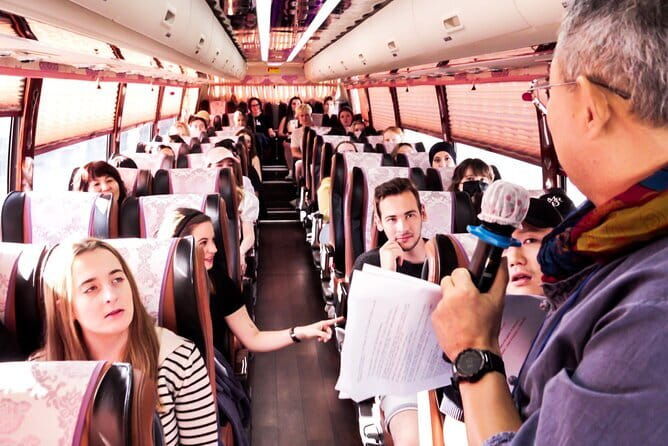
Do I need a passport to join this tour?
Yes, a valid passport is required on the day of the tour because you will visit the DMZ, which has strict entry policies.
How long is the tour?
The tour lasts approximately 9 to 11 hours, making it a full day trip from Seoul.
What is included in the price?
The $40 fee covers most entrance fees, a traditional Korean lunch at Tongil Village, a souvenir sunglasses holder, and a detailed map created by North Korean Studies experts.
Can I skip the Third Tunnel walk?
Yes, the 30-minute walk to the Third Tunnel is optional. If you prefer not to walk or have mobility issues, you can choose not to go down.
What are the group size and the guide’s expertise?
The tour has a maximum of 43 travelers, with guides including Ph.D. Ahn, who has extensive knowledge of North Korea and the DMZ.
Is the tour suitable for children?
Most travelers can participate, but due to the length and some walking involved, it’s better suited for older children or teenagers.
What are the main stops?
Key sites include Imjingak Pavilion, Dora Observatory or Dorasan Station, Tongil Village, DMZ Guide Center, Odusan Unification Tower, Donghwa Gyeongmo Park, and the Catholic Church of Repentance.
Are meals included?
Yes, a traditional Korean lunch at Tongil Village is included in the tour price.
What should I bring on the tour?
Bring your passport, comfortable shoes, a camera, and some cash or cards for personal snacks or souvenirs at markets.
Is the tour accessible for people with mobility issues?
While most parts are manageable, some walking is involved, and certain sites like the Third Tunnel may be skipped if needed.
This well-structured, insightful tour offers a unique window into Korea’s divided past and hopes for reunification. It’s a worthwhile experience for anyone looking to deepen their understanding of this complex region, all while enjoying an affordable, guided day full of meaningful sights and stories.
More Private Tours in Seoul
- Private Tour: Nami Island& (Alpaca World ‘or’ Morning Calm)&Lunch
- (Private tour) Nami Island + Railbike + Garden of morning calm
- Seoul Art Tour with a Local Expert: 100% Personalized & Private
- 2-Hour Private K Cooking Class
- [Private Tour] Nami Island & Snow Viewing and Snow sled (More Members Less Cost)
- Private tour: N.Korea Cooking Class & Talk with N.Korean Defector
More Tours in Seoul
- Elysian Gangchon Ski Resort One Day Tour
- MBC K-Drama Studio Day Tour from Seoul (Ilsan & Sangam)
- Korea Ski Tour from Seoul – Jisan Forest Resort
- Seoul: Korean Chicken & Beer Night Tour with Local Hidden Gems
- Private Tour: Nami Island& (Alpaca World ‘or’ Morning Calm)&Lunch
- Mount Seorak and Nami Island One Day Tour from Seoul
More Tour Reviews in Seoul
Still browsing? Here are more Seoul experiences we've covered recently
- South Korea Highlights 7D/6N
- DMZ + DMZ Gondola with former US Military Camp – K drama
- Seoul : Taste of Korea, Authentic Home-Style Cooking Class
- Elysian Gangchon Ski Resort One Day Tour
- MBC K-Drama Studio Day Tour from Seoul (Ilsan & Sangam)
- Korea Ski Tour from Seoul – Jisan Forest Resort
- Leather Products Workshop in Seoul
- Seoul: Korean Chicken & Beer Night Tour with Local Hidden Gems
- Seoraksan National Park Ulsanbawi Hiking from Seoul
- Private Tour: Nami Island& (Alpaca World ‘or’ Morning Calm)&Lunch
- Hiking in Seoul : Bukhansan National Park
- Mount Seorak and Nami Island One Day Tour from Seoul
